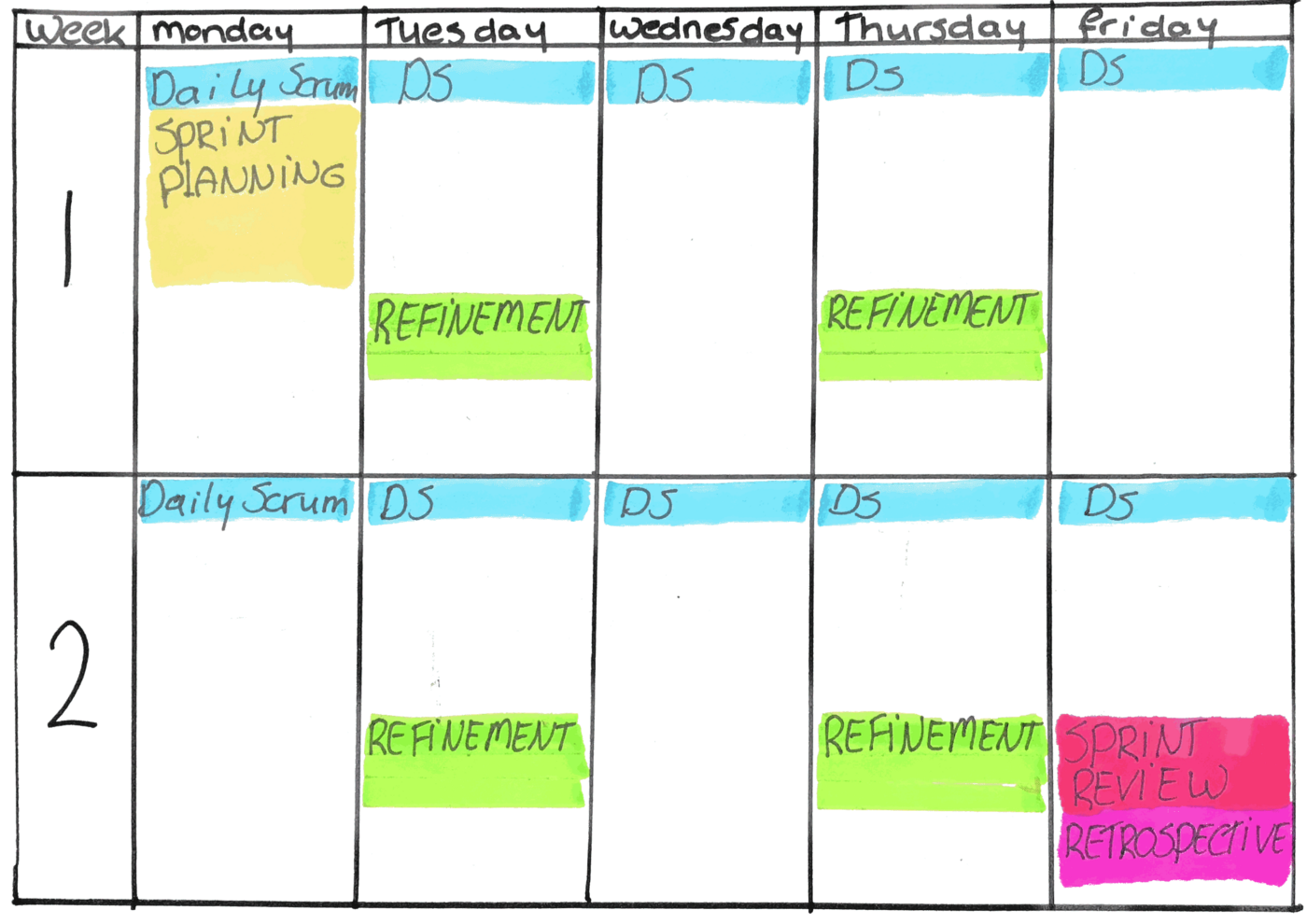Ceremonies
Establishing a base for team's ceremonies help create a rythym and cadence. Utilizing agile practices of the scrum framework, teams typically would have the follow the core ceremonies to ensure teams are aligned, focusing on high prioritized items, and support continuous learning efforts.

| Ceremony | Purpose | Duration | Audience |
|---|---|---|---|
| Refinement | Clean and refine backlog stories, update with outstanding questions and point stories that are fully refined. | 1hr | Everyone |
| Sprint Planning | Confirm backlog stories are fully refined and pointed and decide which stories to pull into the upcoming sprint. | 30min | Everyone |
| Stand up | Daily team touch point. Walk the board or discuss work accomplished yesterday, work planned for today, and blockers | 15 min | Everyone |
| Demo & Retro | Demonstrate code changes to the team, product owner, and stakeholders. Discuss what went well and what improvements can be made. | 1hr | Everyone |
3 Amigos, part of BDD practice, include 30 minute sesions with relevant team members to surface questions and assumptions around product, development, and testing. Although some teams decide to incorporate this into a regularly cadenced ceremony, other teams follow the recommendation to have them adhoc.
Backlog Refinement¶
A well-prioritized agile backlog not only makes release and iteration planning easier, it broadcasts all the things your team intends to spend time on - including internal work that the customer will never notice. This helps set expectations with stakeholders and other teams, especially when they bring additional work to you, and makes engineering time a fixed asset.
Sprint Planning¶
The purpose of sprint planning is to define what can be delivered in the sprint and how that work will be achieved. Sprint planning is done in collaboration with the whole scrum team. A well-defined backlong brought into sprint should result in an efficient session reviewing the stories, points, and acceptance criteria.
Stand Up¶
Each day, the scrum team gathers to discuss the day's work. Although it can easily become a mundane meeting, it should remain as a sharp, crip, critical touchpoint. Able to led by anyone on the team, there are two commmon approaches to running standup:
-
Walk the board. This approach looks at the tickets on the board and reviews the status of each. The emphasis of WTB is the work in progress.
-
Around the room. This approach asks everyone on the team the following questions, highlighting individual progress and blockers.
- What do I do yesterday?
- What am I doing today?
- Are there any blockers?
Sprint Review (Demo & Retro)¶
As teams close out their sprint, they should dedicate an hour to conduct a demo and retrospective. This allows teams to showcase their work to one another and to stakeholders. Retros enable teams to consider what worked well and what did not work well, providing opportunities for ongoing learning and improvment.